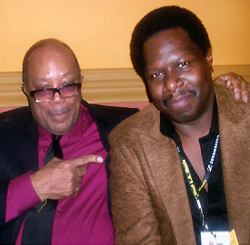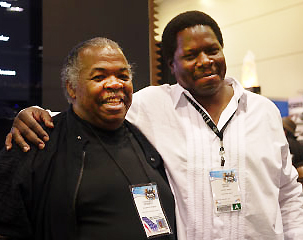
Editor’s Note: In this article, famed Motown producer/engineers Dave Isaac and Reggie Dozier reflect on capturing some of the best-recorded vocal performances in history. As the men behind the boards for Stevie Wonder, Aretha Franklin, Michael Jackson, Whitney Houston, and many more, this dynamic duo has helped shape more than a few Motown hits.
There were many recording techniques used in my years as an engineer back in Detroit in the various recording studios around: Selah, Sound Suite, Vanguard, LaMonte’s, United Sound, Studio A, and more. I shared some of these memories with another fellow Detroiter, the great engineer Reggie Dozier (brother of Lamont Dozier from Holland-Dozier-Holland), over lunch to help me recall the analog days and to give you guys even more bang for your buck in this article.
Getting Started: Techniques
Recording vocals can be simple or scientific. It depends on how much time you have to try different microphones, gear, or techniques if you’re in a recording studio on the clock, or in the privacy of your own home studio. Of course, you hope that the vocalist coming through the door knows how to “work” a microphone.
For example, vocalists like Aretha Franklin, Stevie Wonder, Chaka Khan, and Gladys Knight will move in and away from a mic, depending on the intensity of thoughts they are singing. This technique provided us with incredible dynamics, and in most cases meant we did not have to heavily compress a vocal.
Next, the proximity of where the vocalist stood was key. When we did anything like doubling or background vocals, the proximity on one track may be closer than on another track, or if background vocalists were recorded together, the blend of the harmonies or levels were based on how close they stood to the mic. If you were loud, or if your harmony stood out, you had to stand back more.
Back in the days of analog tape, you might have one chance to get it right. Some vocalist would come in ready to go, do one or two takes and that’s it. They barely would allow you to get a level.
Usually, the first take was the best take or it might have the most creative moments in it, so your levels needed to be close immediately. We couldn’t assume that we had plenty of warm up time, and punching in to fix a distorted vocal was embarrassing to say the least!
The key was to make sure that you kept the dynamics of the vocal without overloading and distortion, to use a pop or wind screen, and having the mic at a good height and angle helped to eliminate plosives and kept you from having to de-ess later.
For the most part, there was no copying and pasting unless you transferred the information to another tape machine, then pressed Play at the right time to record it back to the multi-track. Later, in the ‘80s, units with short sampling times came along which made that much easier.
We made sure that the vocalist had a good headphone mix to prevent any distractions. The right headphones were used to keep out as much headphone leakage as possible in the recording.
The booth was usually dark or dim, in most cases to create the mood and allow the singer to see the music easier. This also kept them from feeling self conscious and gave them the ability to give an uninhibited performance. To see a room full of guests in the control room could sometimes be nerve wracking, so it helped to know that they couldn’t see you.
The producers had to know the art of what to say to the vocalist over the talk-back and in the studio, between takes, to motivate them and guide them to the promised land of the perfect take.





















